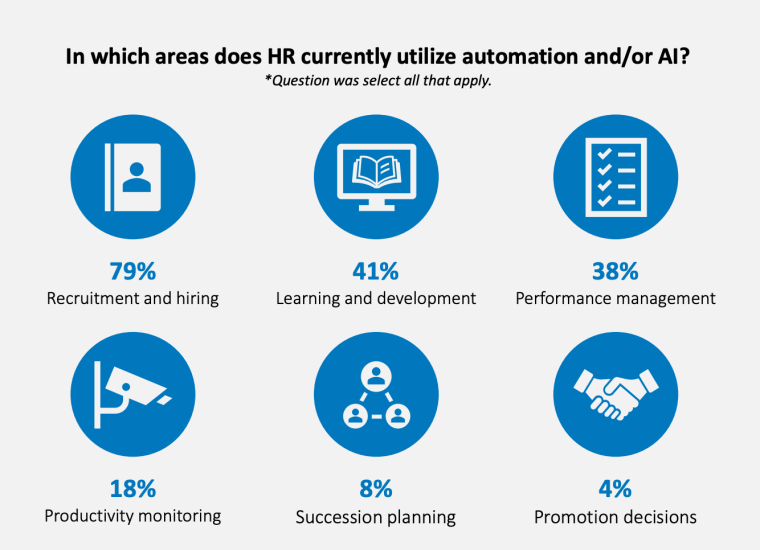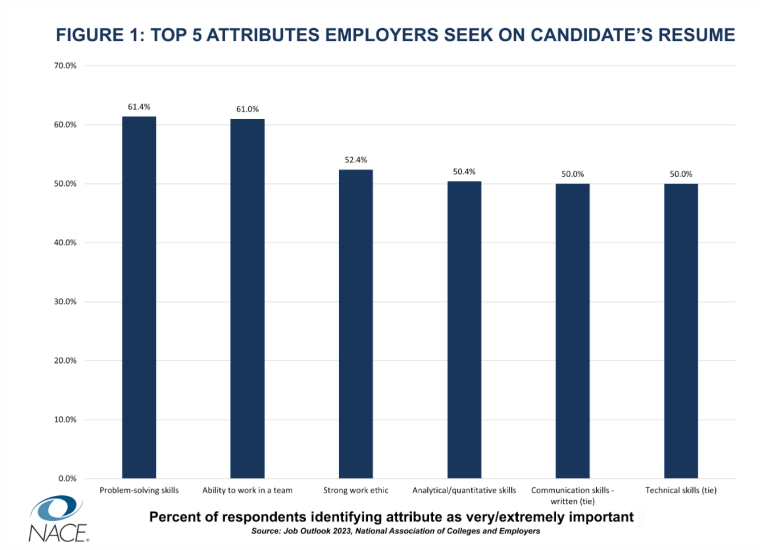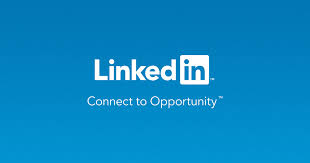In an era where job applicants are more competitive than ever, businesses must have an efficient means of identifying qualified candidates for a new job opening. On the other side of the equation, job seekers need to stand out in a crowded field to secure the job offer they desire. Understanding current resume trends empowers businesses to streamline their hiring processes and job seekers to present themselves in the best possible light while job hunting.
However, at Business2Community we understand that the wealth of information available on resume trends and building the perfect resume in general can be overwhelming. It’s scattered across a multitude of reports, websites, and articles, so we’ve taken the time to gather this essential information into a curated list, making understanding resume trends a cinch.
In today’s competitive job market, a resume is a first impression of potential employees for business owners and HR professionals. According to TheLadders, recruiters spend an average of 6 seconds reviewing a resume. This brief period can determine whether you decide to pick or pass on a candidate, highlighting the crucial role a well-crafted resume plays in selecting interviewees. 77% of employers have immediately disqualified resumes due to grammatical mistakes or typos, and over 6 in 10 resumes in the US contain at least one spelling mistake. A well-written and error-free resume not only conveys professionalism but also showcases attention to detail, a trait valued by employers across all industries. The National Association of Colleges and Employers (NACE) 2023 Job Outlook Survey stated that more than 60% of employers look for evidence that clearly demonstrates problem-solving skills and the ability to work in a team. Half of employers are also looking for proof of strong written communication skills and work ethic on resumes, as well as technical and analytical skills. Hiring managers need to keep abreast with current resume trends to effectively recognize these sought-after skills. Following current resume trends is instrumental in identifying the best candidates within the fleeting seconds dedicated to resume review. By staying updated with these resume trends and knowing what to look for in a resume, hiring managers can quickly evaluate a resume and determine if it is worthy of further consideration. Businesses have integrated applicant tracking systems (ATS) into their recruitment process. These tools filter resumes based on keywords and formatting, allowing only the applications with the relevant skills to reach you as a hiring manager. ATSs simplify the task of sorting through numerous applications, enabling you to efficiently identify potential candidates who meet the desired qualifications with the right technical skills. The global ATS market is expected to grow at a CAGR of 6.7%, reaching a market size of $3.2 billion by 2026, up from $2.3 billion in 2021. The growth in the ATS market is driven by several key factors, including improved candidate experience through streamlined processes, the need for automation in the recruitment process, and enhanced reporting and compliance. In 2023, 97.4% of Fortune 500 companies were using an ATS in their hiring procedures. Among the 13 companies not using an ATS, 8 of them had no other systems used by their hiring team. This could potentially suggest that these 8 companies use a customized, in-house proprietary system for their hiring needs. The adoption rate of ATSs has remained relatively stable over the years. 98.8% of Fortune 500 companies were using an ATS in 2019, and 98.2% in 2018. With so many companies using these tools, it shows a heavy reliance on automation and emphasizes applicants’ need to have an ATS-friendly resume. 75% of resumes are never read by human eyes, due to prospective employers using an ATS. An ATS can help manage high volumes of applications and spot resumes that cover the job listing’s skills requirements. Applicants should be optimizing their resumes with appropriate keywords and formatting to pass through these automated systems. In a study conducted by the Society for Human Resource Management in 2022, 64% of HR professionals stated that their organization’s automation tools automatically filter out unqualified applicants. By automatically filtering out unqualified candidates, these tools enable hiring teams to focus their attention on assessing and interacting with the most promising applicants. 54% of organizations using automation in HR-related activities have faced at least one challenge. Common challenges include a lack of resources to properly audit or correct AI algorithms (24%) and automation or AI accidentally overlooking or excluding qualified applicants or employees (19%). For job seekers, these statistics underline the importance of optimizing resumes to be ATS-friendly. Given that the majority of resumes are filtered out by automated systems, it’s crucial to tailor every application to suit the specific job listing. On average, job seekers have 1.4 resumes. While tailoring resumes to the job posting and having multiple versions of a resume is essential, most applicants choose to submit a single generic resume for all job applications. Including relevant keywords to the job requirements (25-30 is recommended) and appropriate formatting can increase the chances of a resume passing through ATS filters and landing on the desk of a human recruiter. By understanding the workings of these systems, candidates can strategize their applications more effectively, improving their chances of being noticed in the competitive job market. In today’s digital age, traditional resumes, while still integral, are being supplemented by candidates’ social media profiles to provide a more rounded view of their professional story. A 2020 survey by The Harris Poll revealed that 71% of hiring decision-makers believed that reviewing candidates’ social media profiles is an effective way to screen applicants. Recognizing and leveraging this trend could mean access to deeper insights into potential hires when looking at their LinkedIn profile, beyond what’s included in resumes and cover letters. Aside from a professionally compiled resume, an increasing number of employers now expect candidates to have a robust online presence that aligns with their professional identity. 21% of hiring decision-makers are not likely to consider a candidate who doesn’t have an online presence via social media accounts. By encouraging applicants to share their professional online portfolio and profile, you could gain a broader perspective of their competencies, passions, and character traits. Among those who research candidates via social networking, 55% have found content that caused them not to hire the applicant. This highlights the importance of potential employees maintaining a professional and appropriate online presence across all platforms. On the flip side, approximately 94% of hiring managers now use social media to post a job listing. By leveraging social media for recruitment, you can tap into a wider pool of potential hires, foster your brand’s presence among relevant professionals, and ultimately, enhance your recruitment process. For job applicants, it is important to carefully curate your social media presence. 80% of recruiters consider social media either “essential” or “fairly important” for recruiting, with LinkedIn being the most commonly used social network. However, social media can also be a double-edged sword. While it can provide valuable information about your skills and personality, it can also reveal unprofessional behavior or controversial opinions. As a business owner or hiring manager, understanding the importance of soft skills in the recruitment process can provide a more holistic approach to candidate selection. In a survey by LinkedIn, 92% of hiring managers reported that soft skills are equally or more important as hard skills when it comes to selecting candidates for jobs. These skills — such as excellent communication, teamwork, adaptability, and problem-solving — reflect a candidate’s potential for successful integration into your team and their capacity to adapt to new scenarios. Encourage potential hires to highlight these skills in their CVs with real-world examples from their past roles on their job application. Particularly for leadership roles, adaptability is a highly sought-after quality. According to a survey conducted by Harvard Business School in 2020, 71% of 1,500 executives hailing from over 90 countries identified adaptability as the foremost quality they sought in a leader. Soft skills like creativity, curiosity, and comfort with ambiguity also rank high, suggesting that candidates aiming for management positions should emphasize these traits to distinguish themselves to a potential employer. The rapid transformation of work due to digital and AI technologies like machine learning is increasing the importance of adaptability. Findings from a 2021 study by McKinsey disclosed that individuals skilled in adaptability had a 24% higher likelihood of securing employment. McKinsey’s research highlighted that certain high-level skills will become increasingly important, including technological, social and emotional, and higher cognitive skills, while the demand for hard skills and technical skills will decline. Traditional recruitment metrics like GPA are losing ground as determinant factors in the hiring process. In NACE’s Job Outlook 2019 survey, nearly three-quarters of respondents considered GPA, but in the latest survey (Job Outlook 2023), only 37% planned to screen candidates based on GPA. When it comes to resume trends, the declining use of GPA as a screening tool suggests that employers are reevaluating their hiring procedures. Candidates who can effectively showcase their experience, knowledge, and skills on their resumes have a competitive edge. Problem-solving skills (61.4%) and the ability to work in a team (61%) are two soft skills employers look for when selecting candidates. Candidates who can demonstrate these skills in relation to the specific job description will stand out. Prioritizing these skills during the selection process can help your organization to identify the most suitable candidates and fill your skills gap. The top soft skills mentioned in resumes are: Hobbies and interests on a resume make candidates relatable and signal potential new skills. Common interests listed on resumes include: Appreciating concise and precise resumes is key to identifying the right candidates to fit your job description and it’s a key resume trend. The average resume length is 439 words, with a median length of 406 words. When resumes are concise and well-structured, it becomes significantly easier to assess the applicant’s qualifications and skills. In contrast to common assumptions, many recruiters frequently favor two-page resumes. When it comes to management positions, recruiters are 2.9 times more inclined to select a candidate with a two-page resume. For an entry-level job search, this likelihood increases by 1.4 times with a two-pager. Additionally, 77% of employers hold the perception that when seasoned professionals use a one-page resume format, they appear to have less experience. This belief is often based on the idea that experienced professionals have more to offer and therefore need a longer resume to showcase their accomplishments when job searching. A standard or traditional resume should include the following sections: Clear, organized, and professionally prepared resumes can guide the initial screening process. The use of bullet points, bolding, and other formatting tools can enhance readability. A study by The Ladders found that recruiters favor resumes with clear and easy-to-read layouts for scanning purposes. Recruiters spend nearly 80% of their resume review time focusing on six key data points: Beyond this, recruiters merely skim for relevant keywords to match the job opening, a simplistic “pattern matching” process. The specific details and additional information on a resume had little to no influence on the preliminary decisions. For job seekers, effective resume design and layout can play an instrumental role in capturing a recruiter’s attention. By strategically positioning the six key data points where recruiters are most likely to look and using clear, easily readable formatting, most job seekers make it easier for recruiters to find the information they’re looking for, increasing the chances of a favorable initial decision. The same Ladders study also showed that: In today’s competitive job market, having an up-to-date and on-trend resume is crucial. There are various ways to achieve a standout resume that will catch the attention of potential employers. Online tools like Canva offer numerous free resume templates, that are not only professional but also visually appealing and customizable. These tools can help you design a resume that aligns with your personal brand and the industry you’re aiming for. Be careful of going overboard however as it’s absolutely essential that your resume is still easy to read. Follow industry influencers who share advice on creating compelling resumes. LinkedIn or professional blogs are great platforms where you can find these experts. Their insights and tips can offer a fresh perspective and help in crafting a resume that stands out. There are tons of great YouTube channels and podcasts that focus on career growth and on resume writing and building. For instance, YouTubers like Linda Raynier and podcast hosts like Mac Prichard offer valuable tips and tricks on creating a modern resume.Key Current Resume Trends
What are 2025‘s Current Resume Trends?
1. Use of ATS-Compliant Resumes

2. Social Media Integration
3. Emphasis on Soft Skills
4. Concise and Targeted Resumes
5. Effective Use of Resume Design and Layout
How to Create an On-Trend Resume
Use Online Tools
Follow Influencers
Watch Tutorials
Embedding these resources into your job search strategy can significantly improve your resume’s quality and appeal to potential employers.
The Future of Resume Trends
The landscape of resume trends is evolving swiftly with the acceleration of the digital age. One key resume trend to watch is the incorporation of artificial intelligence (AI) in the recruitment process.
AI can aid employers in filtering through massive numbers of resumes more efficiently, highlighting the necessity for applicants to optimize their resumes with relevant keywords and skills.
The rise of remote work due to recent global changes could also influence resume trends for 2025. Candidates may begin to highlight their ability to work independently, maintain productivity in a home environment, and navigate virtual communication platforms.
Finally, the advent of personal branding has started to seep into the world of resumes. Candidates are increasingly using their resumes as an extension of their professional brand, integrating elements of their professional experience, personal style, and digital presence to make a memorable impression on potential employers.
These emerging trends underscore the importance of staying ahead of the curve in the constantly changing job market. By anticipating these shifts, candidates can craft resumes that not only meet the current standards but also prepare for job postings in the future.






